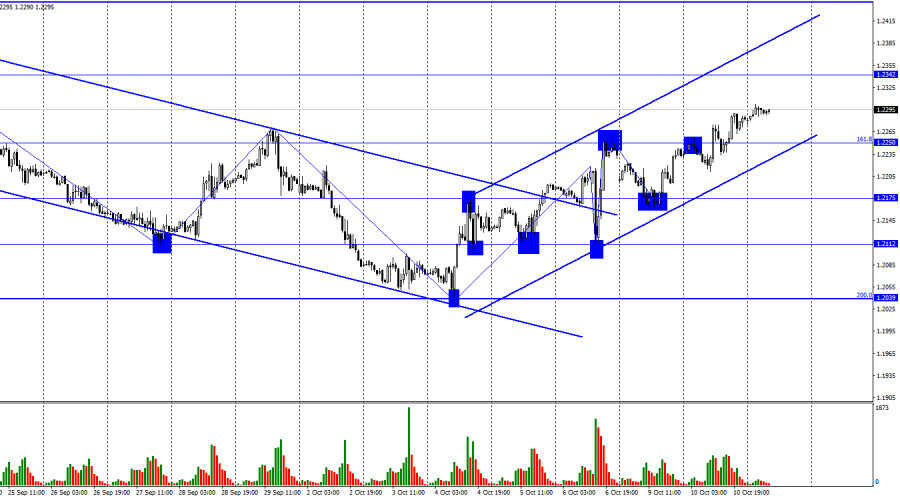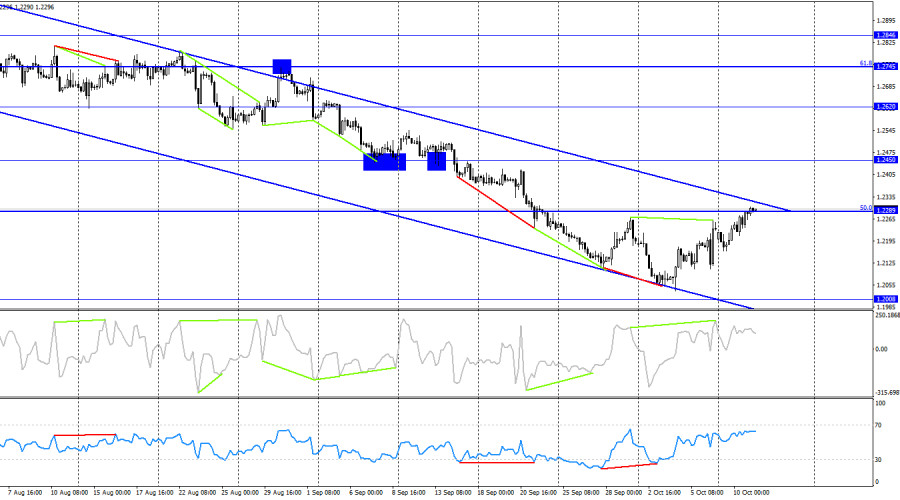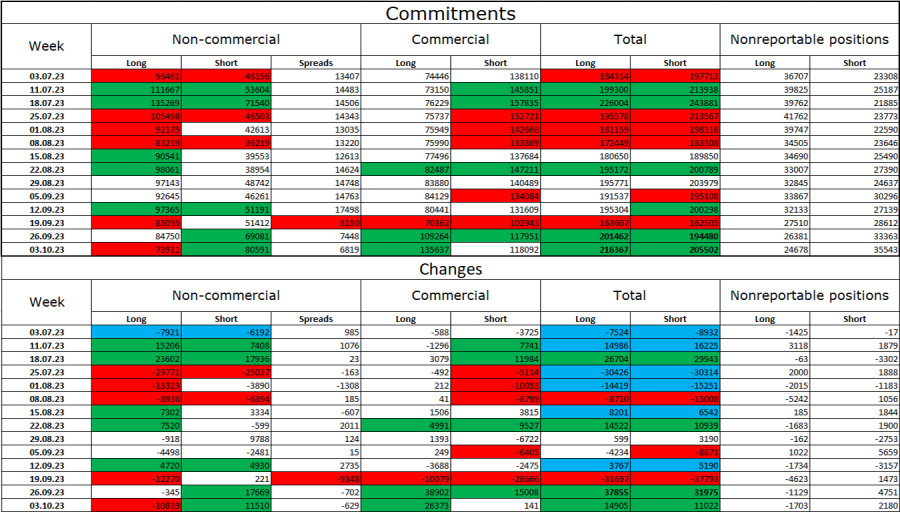
On the hourly chart, the GBP/USD pair on Tuesday closed above the corrective level of 161.8% (1.2250), which allows for expectations of further growth towards the next level at 1.2342. The upward trend corridor characterizes the current sentiment of traders as "bullish." The resumption of the British pound's decline can be expected after the pair's exchange rate closes below the corridor.

The situation with waves has become clearer for the British pound as well. After breaking through the peak of October 6th, we can confidently say that a new "bullish" trend is in place. The question is, how long will it last? After all, the British pound does not have strong fundamental support. However, there are currently no signs of the end of the "bullish" trend, so why talk about a "bearish" trend now? Signs could appear if the pair drops below the 1.2175 level, which may not be so simple to achieve, especially with the current relatively weak fundamental backdrop and the need to fall by 110–120 points. A simpler method of identification is to close below the ascending corridor.
The Federal Reserve is concerned about a sharp rise in the yield of government bonds, which is directly tied to the size of the interest rate. The higher the rate, the higher the yield, the higher the demand for treasuries, and the more dividends the Fed will have to pay in the future. Dallas Fed President Robert Kaplan stated yesterday that the process of tightening monetary policy may need to be paused to prevent further increases in bond yields.
Philip Jefferson also expressed concerns about rising yields and the need to act more cautiously in the future. The market may interpret this information as "dovish," which could lead to a stronger decline in the US dollar. In any case, we are waiting for the FOMC protocol tonight.

On the 4-hour chart, the pair has reversed in favor of the British pound after forming a "bullish" divergence on the RSI indicator and has risen to the 50.0% Fibonacci level at 1.2289. The "bearish" divergence on the CCI indicator did not lead to a reversal downward. A rebound from the 1.2289 level could favor the US dollar and the resumption of the decline towards 1.2008. A rebound from the upper line of the descending trend corridor could do the same. Expect significant growth in the British pound only after closing above the corridor.
Commitments of Traders (COT) report:

The sentiment of "non-commercial" traders in the last reporting week has once again become less "bullish." The number of long contracts held by speculators decreased by 10,839 units, while the number of short contracts increased by 11,510 units. The overall sentiment of major players has shifted to "bearish," and the gap between the number of long and short contracts is widening, but now in the opposite direction: 73,000 versus 80,000. In my opinion, the British pound still has excellent prospects for a decline. I don't expect a strong pound sterling rally in the near future. I believe that over time, bulls will continue to reduce their buy positions, similar to what's happening with the European currency. Only a close above the descending corridor on the 4-hour chart will make me consider a new "bullish" trend.
Economic Calendar for the US and the UK:
US – Producer Price Index (PPI) (12:30 UTC).
US – Release of FOMC minutes (18:00 UTC).
On Wednesday, the economic events calendar includes two entries, of which only one can be considered "important." The influence of the information background on market sentiment will be absent today.
Forecast for GBP/USD and Trader's Advice:
Selling the British pound is possible when the hourly chart closes below the ascending corridor, with targets at 1.2175 and 1.2112. Buying opportunities were available after the hourly chart closed above the level of 1.2250 with a target of 1.2342. These trades can now be kept open.